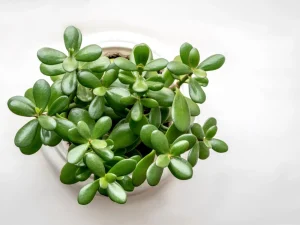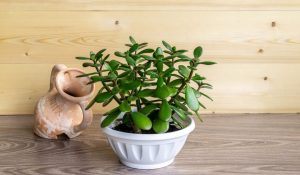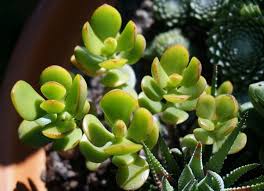
Advantages of jade plants. Jade plants are common in gardens and homes because of their robust growth and thick, glossy leaves. Even though they are valued for their symbolic meaning and visual appeal, it’s critical to recognize both their advantages and disadvantages. Six important factors to take into account when adding a jade plant to your collection will be covered in this guide.
ADVANTAGES OF JADE PLANTS
Commonly referred to as the Jade plants, Crassula ovata is also known as the Money Plant, Dollar Plant, Lucky Plant, and Friendship tree. You must have one in your home because of how well-liked houseplants are. And after reading this article’s list of advantages forJade plants, , you’ll be growing them indoors if you haven’t already!
1. improves indoor air quality

Recent studies have shown that indoor air can be just as polluted and lethal as outdoor air. Symptoms include headache, nausea, dizziness, allergies, and lack of concentration, and it can even result in the “Sick Building Syndrome.” Although the best defense against this is adequate ventilation, air-purifying houseplants such as the jade plant, spider plant, golden pothos, snake plant, dracaena, and aloe vera can also be used.
2. It Enhances Humidity

Low indoor relative humidity can impact your health and appearance. Symptoms such as dry skin, chapped lips, an itchy throat, static electricity, colds and flu, and allergies can arise. Furthermore, dry air allows infectious bacteria and viruses to thrive for extended periods. While humidifiers are excellent for raising indoor humidity levels, houseplants can also contribute; the best options include Pothos, peace lily, spider plant, jade plant, and philodendron.
3. Simple Upkeep

The Jade Plant’s low maintenance requirements are one of its key benefits. It thrives on the “drench and dry” technique, which involves giving it a full watering and then letting the soil dry entirely before giving it another one. Although they prefer a sunny location, jade plants can also tolerate a range of light levels, including low light and bright, indirect sunshine.
4. A lucky charm

The jade plant is a symbol of wealth, success, and good fortune in many civilizations. According to feng shui experts, putting a jade plant in the southeast corner of your house or place of business will draw prosperity and good vibes. Because of this notion, the jade plant is known as the “money plant.” It is a well-liked housewarming gift because of its connections to prosperity and good fortune.
5. Lessens Stress

Numerous studies have demonstrated the positive effects of indoor plants on mental health and stress reduction. Having a jade plant in your house can help to create a relaxing atmosphere that lowers anxiety and encourages relaxation.
6. Extended Lifespan

Jade plants have a reputation for being long-lived. They can live for many years, even decades, if given the right care. Because of this, they are a long-term investment for your house that will pay you for many years to come. A well-maintained jade plant can become a treasured feature of your home, unlike some that need to be replaced often.
Summary
From raising your home’s visual appeal to lowering stress and boosting air quality, the jade plant has several advantages. It is a great option for any home because of its long lifespan and low maintenance requirements. Whether you want to bring good fortune and positive energy into your home or just add a little greenery,